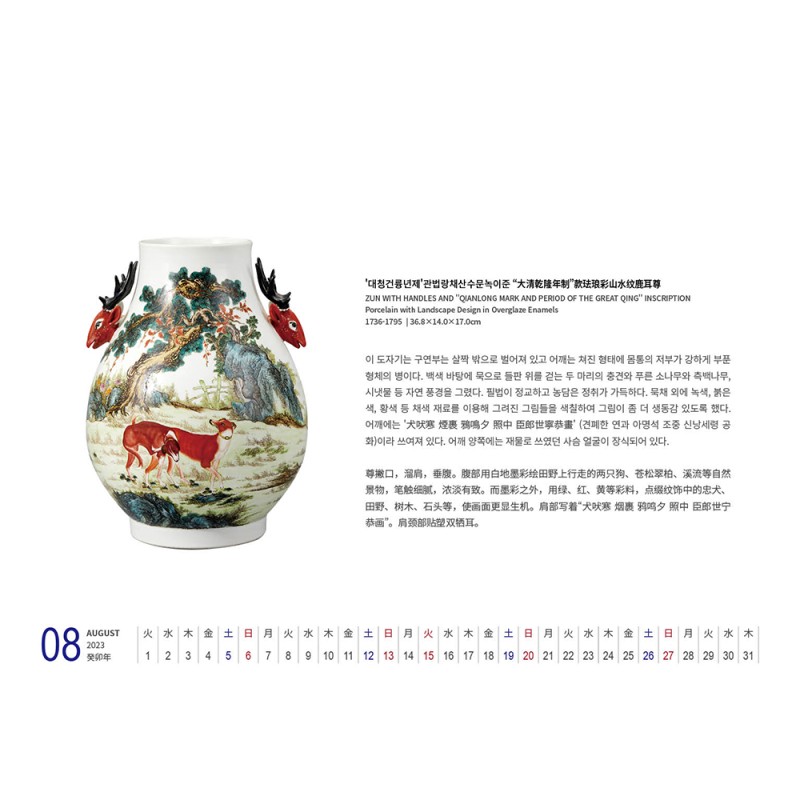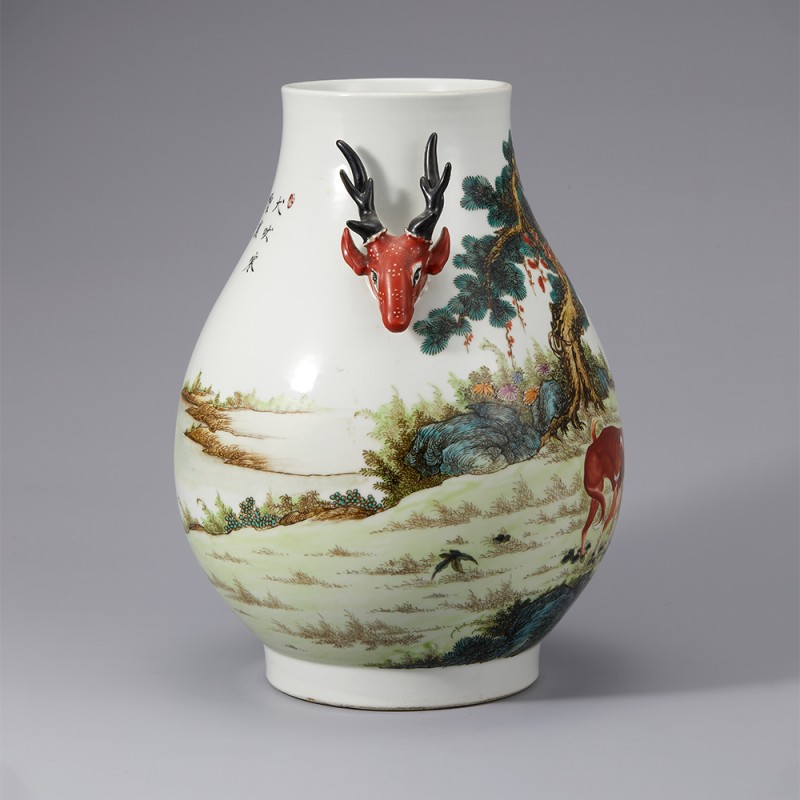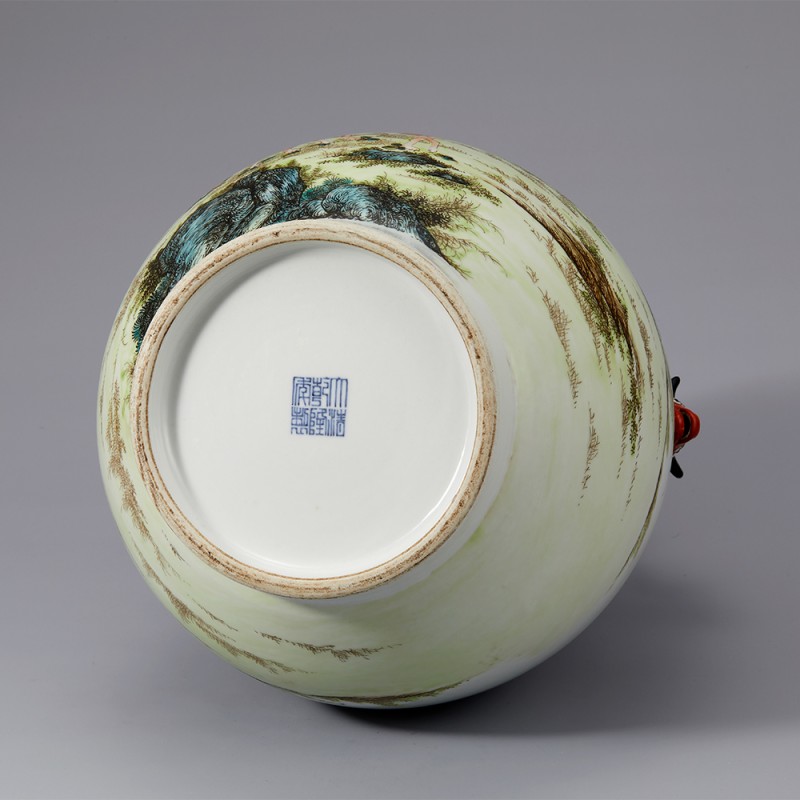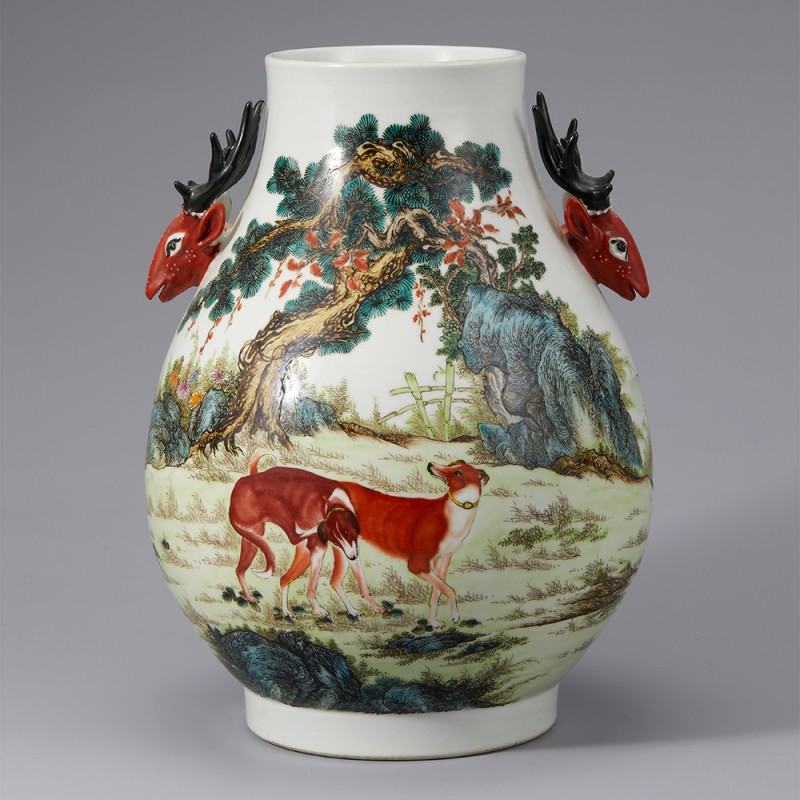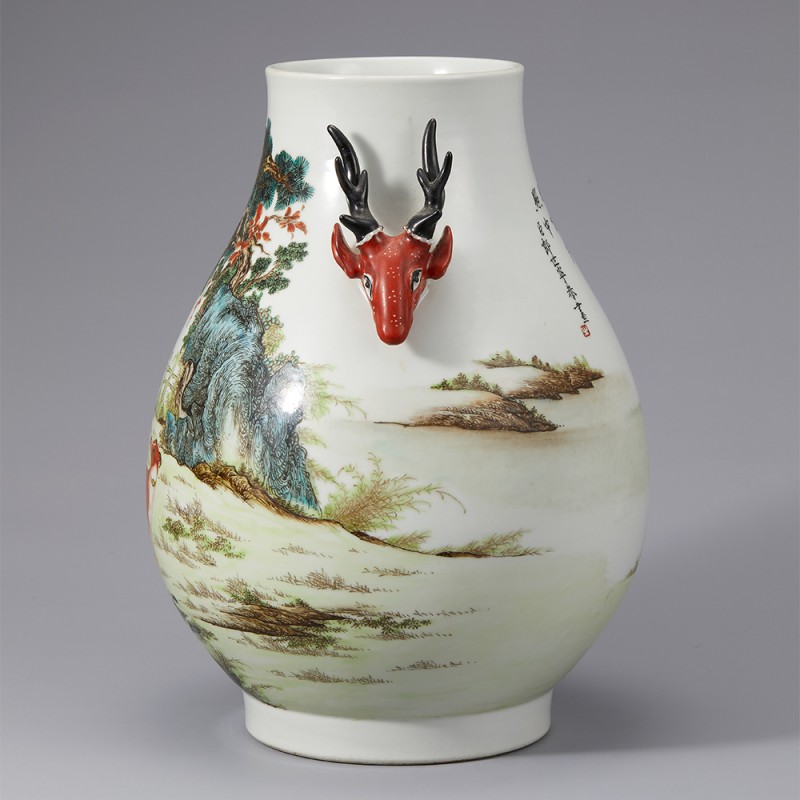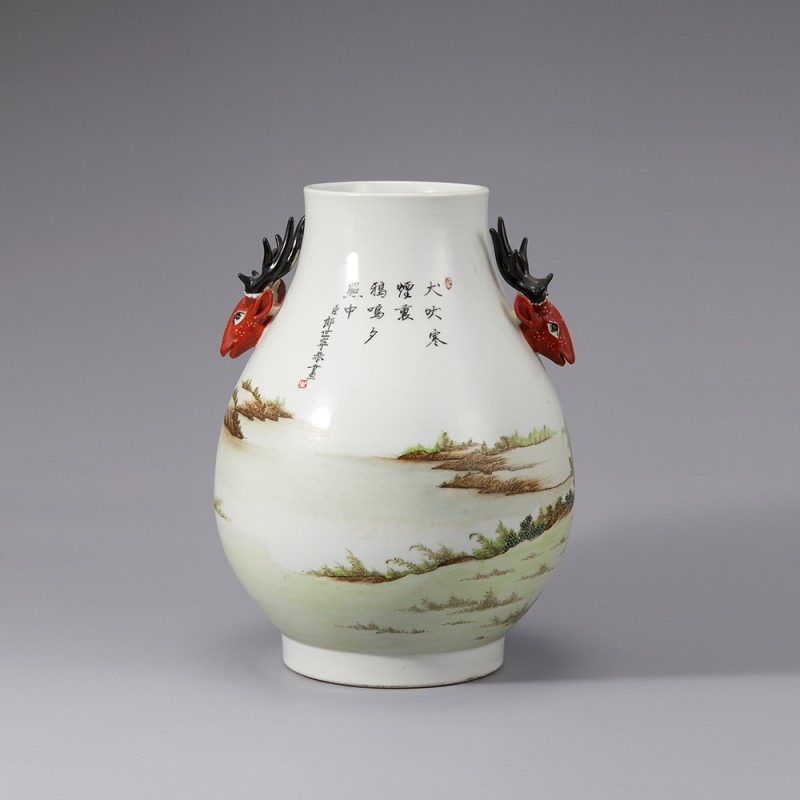'대청건륭년제'관법랑채산수문녹이준
페이지 정보
- 조회수1,631
- 작성일23-01-31 16:18
본문
이 도자기는 구연부는 살짝 밖으로 벌어져 있고 어깨는 쳐진 형태에 몸통의 저부가 강하게 부푼 형체의 병이다. 백색 바탕에 묵으로 들판 위를 걷는 두 마리의 충견와 푸른 소나무와 측백나무, 시냇물 등 자연 풍경을 그렸다. 필법이 정교하고 농담은 정취가 가득하다. 묵채 외에 녹색, 붉은색, 황색 등 채색 재료를 이용해 그려진 그림들을 색칠하여 그림이 좀 더 생동감 있도록 했다. 어깨에는'犬吠寒 煙裹 鴉鳴夕 照中 臣郎世寧恭畫'이라 쓰여져 있다. 어깨 양쪽에는 재물로 쓰였던 사슴 얼굴이 장식되어 있다.
낭세녕(郞世寧, 1688~1766)은 이탈리아 밀라노 출신의 본명은 카스틸리오네(Giuseppe Castiglione)이다. 1715년에 청나라로 가서 강희, 옹정, 건륭 시기를 거치며 50여년 동안 궁중화가로 활동했다. 또한 청나라 10대 궁중화가 중 한명으로서 청대 최대 황실 이궁인 원명원 서양루 설계에 참여하였다. 말과 초상화, 꽃과 짐승 등 자유롭게 그렸고 서양 회화 방식과 중국 전통 필묵을 합쳐 자신만의 독창적인 화법을 만들었고 강희 시기 이후의 청대 궁중 회화 방식과 심미적 기호에 영향을 끼쳤다. 낭세녕은 이를 통해 황제의 총애와 신뢰를 받았다.
尊撇口,溜肩,垂腹。腹部用白地墨彩绘田野上行走的两只狗、苍松翠柏、溪流等自然景物,笔触细腻,浓淡有致。而墨彩之外,用绿、红、黄等彩料,点缀纹饰中的忠犬、田野、树木、石头等,使画面更显生机。肩部写着“犬吠寒 烟裹 鸦鸣夕 照中 臣郎世宁恭画”。肩颈部贴塑双牺耳。
郎世宁生于意大利米兰市,原名朱塞佩·伽斯底里奥内。1715年去中国清朝入皇宫任宫廷画家,历经康熙、雍正、乾隆三朝,在中国从事绘画50多年,并参加了圆明园西洋楼的设计工作,为清代宫廷十大画家之一。郎世宁擅绘骏马、人物肖像、花卉走兽,风格上将西方绘画手法与传统中国笔墨相融合来创造了独创的新画体,其画体极大地影响了康熙之后的清代宫廷绘画和审美趣味。他博得了皇帝的赏识和信任。
A vase with a flared mouth, drooping shoulders, and a strong round body. The body is decorated with two loyal dogs walking around at a widespread nature field, surrounded by green pine trees, Thuja Orientalis, and a lake. The brush strokes are detailed and the light and shades create a deep sentiment. Besides the underglaze black color, the design is decorated with green, red, and yellow to add a bit of liveliness. Around the shoulder is a short poem that says, '犬吠寒 煙裹 鴉鳴夕 照中 臣郎世寧恭畫.' There is a deer-head handle on each side of the shoulder. Back in the day, deer were used for sacrifice.
Giuseppe Castiglione (郞世寧 1688 ~1766) was born in Milan, Italy. In 1715, he moved to China during the Qing Dynasty period, and he worked as a painter of the imperial palace in the Kangxi, Yongzheng, and Qianlong eras for more than 50 years. Giuseppe Castiglione was talented in painting horses, portraits, flowers, and animals. He combined western painting techniques with traditional Chinese brush ink style to create an original new style. In the later Kangxi periods, he then influenced the art style and the aesthetic preferences of the imperial court and gained the emperor's appreciation and trust.
- 이전글'건륭년제'관모란공작문상이포월병 23.01.31
- 다음글'대청옹정년제'관제남유단화문삼족사자개합 23.01.31
